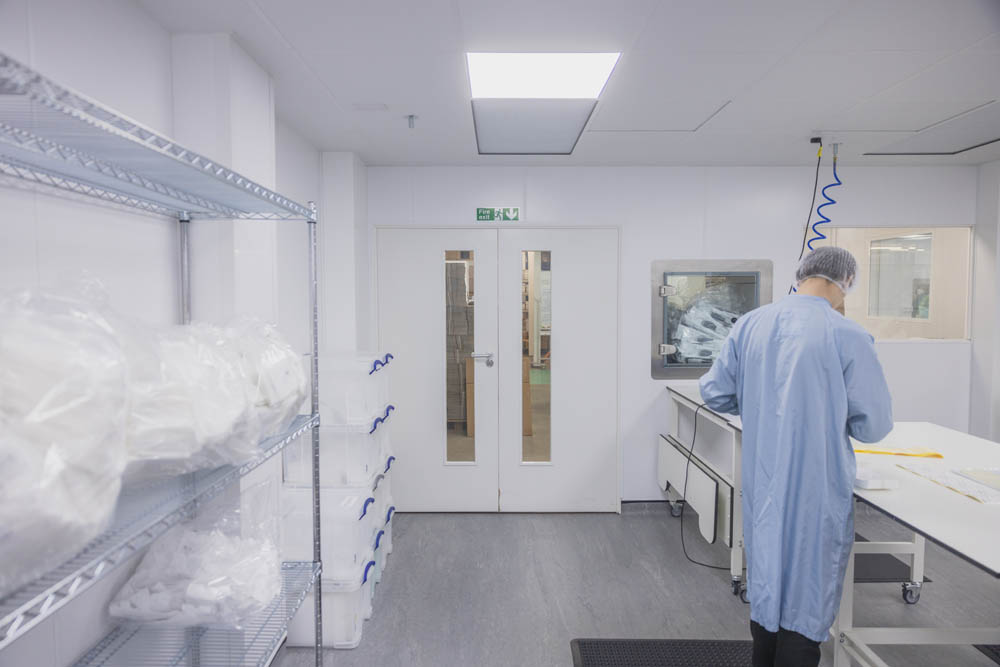Keeping Older Cleanrooms Up To Date in Pharmaceutical Manufacturing
Many cleanroom facilities in use today are more than 10 years old. While careful maintenance and consistent use can mean there is no requirement for change, ageing facility issues are important to address where they arise.
According to Tim Sandle (2021), “regulatory inspection trends have shown that aspects of aging facilities are being cited with greater frequency,” particularly as companies seek to make savings. Older facilities tend to require more maintenance than new facilities and face significant changes in use since their installation.
Updating cleanroom facilities can ameliorate the contamination risk factors associated with degraded equipment and changes in standard operating procedures.
How Long Do Cleanrooms Last?
There’s no clean-cut age at which cleanrooms stop being compliant or effective. Whether or not a cleanroom can be considered to have aged depends on the material conditions and the efficacy of equipment and surfaces, as well as changes in the scope of operations and regulatory recommendations.
Regular cleanroom upgrades keep facilities compliant and operational for longer. Building suitability assessments should emphasise cleanroom facilities and highlight opportunities for improvements.
Material Degradation
One key risk factor Sandle names is the ageing fabric of surfaces such as walls, cabinets and floors. Older facilities may have peeling paint, damaged vinyl floors or corroded pipes, all of which are significant contamination risks. Even fine cracks can trap microbes and particulate matter at depths that are impenetrable to disinfectants. This presents acute risks of harbouring spore-forming organisms such as Bacillus and fungal species.
The materials used in the original construction may no longer be compatible with today’s required cleaning and may degrade into fine particles. Modern surfaces are coated with vinyl or epoxy to prevent degradation under rigorous cleanroom disinfection practices.
Weak joints between wall panels also pose a problem. Usually, these are sealed with silicone, but where this has degraded or was installed incorrectly, minute gaps can cause problems. Gaps are traps for contamination, but they can also disrupt airflow. Gaps between wall panels can cause high velocity airflow that pulls external air into the cleanroom, along with contaminants.
Ageing Cleanroom Equipment
Contamination risks in ageing pharmaceutical facilities often come from equipment functioning below the expected standard. As machinery gets older and key components wear out, it requires more frequent maintenance, resulting in shutdowns and associated risk of contamination.
HVAC systems
HVAC systems are central to creating cleanliness and optimal conditions in pharmaceutical cleanrooms, controlling temperature, humidity, ventilation and air input.
Failed filters or seals allow contaminants to enter with the air supply, but can be prevented with regular inspections and replacements.
Air supply volume can degrade and diminish over time, affecting the air exchange rates. A cleanroom’s ISO classification is maintained through frequent air changes, and lower air supply volume leads to longer air exchange cycles. This raises the risk of contaminants building up beyond the allowed concentration threshold.
“This risk can be overlooked because most cleanroom-monitoring systems assess pressure differentials rather than air-supply volumes.” (Sandle, 2021)
Regular maintenance & filter replacements are key to keeping HVAC systems functional and compliant with the registered grade. Air supply issues may be caused by blocked filters, blocked vents or leaky ducts.
Other Equipment
As operational equipment ages, discolouration from repeated contact with ingredients such as WFI can cause discolouration or roughing.
Discoloured surfaces are more difficult to visually inspect for cleanliness. Surface damage, roughing, pitting and abrasions on older equipment can harbour contaminants. Repeat the cleaning validation for each damaged item to assess whether current cleaning SOPs are enough to ensure sterility.
Another problem of ageing equipment is obsolescence. For both software and hardware, technology moves on:
- Repairs become more expensive
- OEMs no longer stock spare parts
- Operating system upgrades lead to data loss, preventing analytics
Ensuring compliance when equipment is out of date becomes difficult, and pharmaceutical producers may find replacement to be more cost-effective than repair and maintenance.
Change of Scope
Each cleanroom is purpose-built for specific processes and products. All companies grow, and product formulations develop and change as new research emerges. However, expanding operations, adding new standard operating procedures, and diversifying product ranges can put a strain on cleanrooms, increasing the risk of contamination.

Personnel
As personnel are the most common source of contaminants in cleanrooms, increasing the number of personnel necessarily increases the risk of contamination. Higher cleanroom occupancy rates require more frequent cleaning, gowning supplies, and more stringent controls.
New Equipment
Installing new equipment in existing cleanrooms can disrupt carefully planned airflow directions and circulation. At best, this creates air turbulence that lifts contaminants from the floor. At worst, it produces stagnant spaces between equipment where spore-creating microbes can grow undisturbed.
In some cases, new equipment can generate more heat, putting pressure on air conditioning units.
Additional equipment also reduces the spatial volume of the room, changing the particulate concentration (e.g. PM5/m3) and possibly affecting compliance.
Finally, adding equipment without careful planning can disrupt cleaning flows and create difficulty in disinfecting all parts of the cleanroom quickly and effectively.
It is important to assess how operations, staffing and equipment within a cleanroom has changed since the original build, and whether this has impacted the cleanliness of the cleanroom. In many cases, expanding and updating the cleanroom is a viable option, increasing efficiency and improving cleanliness.
Reduce Microbial Risks
In any cleanroom older than 10 years, it is important to assess whether the facility is still MHRA compliant and fit for purpose, and whether changes in operations have created inefficiencies.
Methods to reduce microbial risks recommended by pharmaceutical experts include:
- Regular cleanroom maintenance
- Transition to a closed system
- Use sterile, single-use technologies
- Correct design flaws with cleanroom modifications
- Update controls and technology for efficiency
- Provide additional training for personnel to assess visual cleanliness of older equipment
To discuss upgrading or extending a cleanroom, contact Airology Systems to see how we can help. Our designs often include room to grow into, anticipating future business needs before we begin the build.
We can modify parts of an existing cleanroom to ease congestion or replace degraded materials, build a new cleanroom within an older space or create a new cleanroom as an extension to your facility. Our designers will look carefully at plans to prevent contamination from existing void spaces around the cleanroom, and schedule our cleanroom design and build to minimise operational downtime.
Find out more about our cleanroom installation services.




